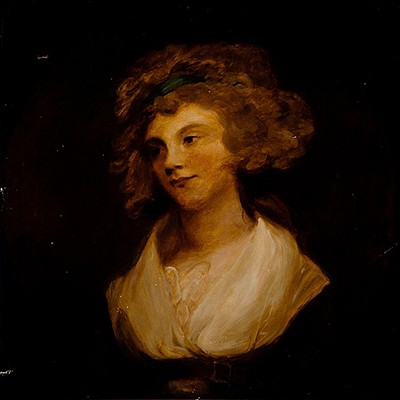GIOVANNI BATTISTA PIAZZETTA (Venice, 1682-1754). "Madonna and Child with St. John Child". Oil on canvas. Relined.
About Seller
Carrer Aragó 346
Barcelona
Spain
Setdart Subastas was born in 2004 and is currently the first online art auction in Spain with solidity, prestige and reliability guaranteed by our more than 60,000 users. Setdart has a young, dynamic and enterprising team ready to successfully manage the purchase and sale of art works through custom...Read more
Two ways to bid:
- Leave a max absentee bid and the platform will bid on your behalf up to your maximum bid during the live auction.
- Bid live during the auction and your bids will be submitted real-time to the auctioneer.
Bid Increments
| Price | Bid Increment |
|---|---|
| EUR€0 | EUR€10 |
| EUR€200 | EUR€25 |
| EUR€500 | EUR€50 |
| EUR€1,000 | EUR€100 |
| EUR€3,000 | EUR€200 |
| EUR€5,000 | EUR€500 |
| EUR€10,000 | EUR€1,000 |
| EUR€20,000 | EUR€2,000 |
| EUR€50,000 | EUR€5,000 |
About Auction
Nov 25, 2021
Setdart Auction House sofia@setdart.com
- Lot Description
GIOVANNI BATTISTA PIAZZETTA (Venice, 1682-1754). "Madonna and Child with St. John Child". Oil on canvas. Relined. It has restorations and has slight damage to the frame. Measurements: 94 x 71 cm; 101 x 77 cm (frame). The artist presents us with a scene of great warmth, where several of the most relevant religious themes of Christianity harmonize. At first we could think that it is the representation of the Holy Family, as the figure of San Juanito is on the left side of the composition. However, the main theme is the representation of the Virgin of the Milk or of the Good Milk, also known as the nourishing Virgin or wet nurse, Virgin of the Rest or of the Good Rest, Virgin of Bethlehem or of the grotto of Bethlehem; it is an invocation and an iconography of the Virgin Mary, in which she is represented in the act of breastfeeding the Baby Jesus. This representation has had several developments in sacred art, such as painting, sculpture and the particular iconography of the Orthodox Church. The representation of the Virgin breastfeeding the baby Jesus is mentioned by Pope Gregory the Great. Giovanni Battista Piazzetta was the son of the sculptor Giacomo Piazzetta, from whom he learned the art of wood carving in his early years. In 1697 he began his pictorial training as a disciple of Antonio Molinari, and later moved to Bologna. He remained there between 1704 and 1705, and furthered his training in the workshop of Giuseppe Maria Crespi, although there is no record of formal tutelage. Nevertheless, through Crespi Piazzetta was influenced by Carlo Cignani, and the Venetian also learned from Crespi's painting, in which Caravaggio's chiaroscuro is transformed into a language of graceful charm that surrounds the protagonists of his paintings, popular characters taken from everyday life. In Bologna Piazzetta was also impressed by Guercino's paintings. Around 1710 he returned to Venice, where he soon acquired great fame. In his mature years he developed an art characterized by a warm and rich chromatism and by a lyricism endowed with a certain mysterious air. He often depicted peasants in his works, even dressed in rich clothing. He was especially original in the intensity of color he used in his shadows, as well as in the almost supernatural quality with which he endowed his lights, even achieving an impression of three-dimensionality in his paintings. His charcoal drawings are also remarkable, especially those of groups of heads or figures. He also made some engravings. In 1750 Piazzetta was appointed director of the newly founded Scuola di Nudo, and dedicated the last years of his life to teaching. Previously, in 1727, he had been appointed a member of the Accademia Clementina in Bologna. He is currently represented in the Accademia Gallery in Venice, the Louvre Museum, the National Gallery and Royal Collection in London, the National Gallery of Art in Washington D.C., the J. Paul Getty in Los Angeles, the Art Institute of Chicago, the Metropolitan Museum in New York, the Pinacoteca Civica di Vicenza, the Albertina in Vienna, the Thyssen-Bornemisza in Madrid and many others.
Dimensions:
INV Number:
94 x 71 cm; 101 x 77 cm (frame).
35256235 - Shipping Info
-
In-house shipping available. Please inquire at admin@setdart.com.
-
- Buyer's Premium



 EUR
EUR CAD
CAD AUD
AUD GBP
GBP MXN
MXN HKD
HKD CNY
CNY MYR
MYR SEK
SEK SGD
SGD CHF
CHF THB
THB

















